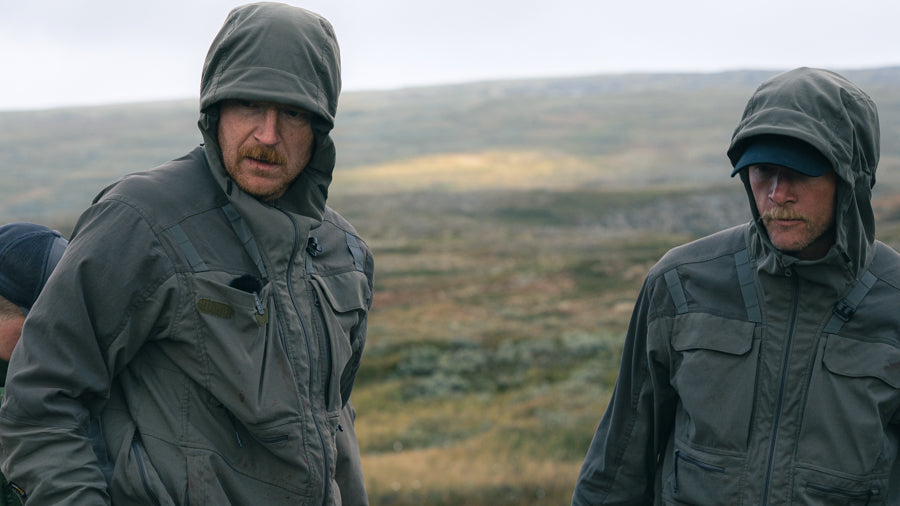
Lynx hunting, snow hunting.
Since the lynx can move 10 miles and sometimes even more in one night, you usually always benefit from calling yourself instead of just following the trail.
In the concept of lynx hunting, there are usually 2 parts.
- Find the daily habit, ie locate the place / area that the lynx has chosen as daily.
- Start the hunting attempt, which usually includes the release of pass shooters before the hunt begins.
Calling lynx.
Lynx hunting on snow differs above all from hunting on crowds / bare ground in that you first and foremost look for traces of lynx on the snow, once you find it, you only follow the trail to a certain extent. The idea is to try to locate the lynx's daycare center in the first place without bumping it out of it before pass shooters are exhibited around the area.The so-called ringing work is done so that you follow the trail to an area where the lynx can have its daily, which means that you avoid following the trail up into mountains or into dense young forests where the lynx can stay. As the lynx rarely lies on open surfaces, the ring is made around the lynx on clear-cut and lakes as well as roads / snowmobile trails. If there are traces from the area during the necking work, you continue to follow the track to the next area where the lynx can be expected to lie and the procedure is repeated.
In particularly interesting areas where the lynx often lie in daily, it may be worthwhile to still hit a whole ring as they may also have gone through the area and then go back to the place. When the ring is wrapped completely around the mountain, there can suddenly be a number of tracks in and out of the area, which can upset the whole thing a bit.
There are actually 2 ways to deal with that problem when it arises.
- Extend the ring until you have 1 track or can state that the lynx must remain and show pass shooters and enter the track with or without a dog.
- Start walking the lynx tracks until you have all gone out and possibly bump the lynx, or come out in a pilot track that does not go back into the area. (Option 2, in my experience, rarely succeeds but takes valuable time from daylight).
It is also worth remembering that the lynx likes to follow its old tracks, which makes it difficult to make secure rings when the snow is old.
A tip if it is several days old snow and no fresh snow approaching before the lynx hunt is to stick a real spruce rusk in the middle of the track, it forces the lynx to put a foot next to the rusk or jump over which in turn gossips that the lynx has passed in the track several times.

Size of a lynx ring.
Depending on the terrain and the nature of the area, a lynx ring can range from a few hundred meters in diameter to several kilometers or more in diameter. In some cases it can be more time efficient to make a large ring and then exhibit pass shooters and start the lynx hunt than to spend time making the ring small before the hunt starts.
When the lynx hunt begins!
When the ring is tight and the pass shooters are exposed, you can choose to track with a dog / dogs on a leash until you bump the lynx or choose to let the dog / dogs in the track.The element of surprise is preferable and the dogs are released in the track, but the downside is that the further away from the daily life of the lynx you are, the greater the risk that another type of game is in the track under the road in front of the dog. The dog owner can simply go to himself and make an assessment of whether the dog will follow the trail to the lynx or pick up some other prey on the way. If the dog picks up the wrong type of game, it can be lost many times that day.
If you follow the trail but the dog on a leash, you usually lose the moment of surprise, but at least it will be lynx hunting
Some tips
Many times when the lynx lies in daily, they like to go a little fishing hook before the play. If, for example, you have a lynx trail that follows a steep mountainside, it often pays to lean up the mountain, it is not uncommon for the lynx to lie and look down on its own trail. By doing so, you save time, which can be crucial on the short hunting days in March.
If you choose to let the dog in the track, it can also be worthwhile to move up the slopes as the lynx often bends back when the dog gets the lynx up.
Hope this can help you to a successful lynx hunt / Rasmus





Leave a comment (all fields required)